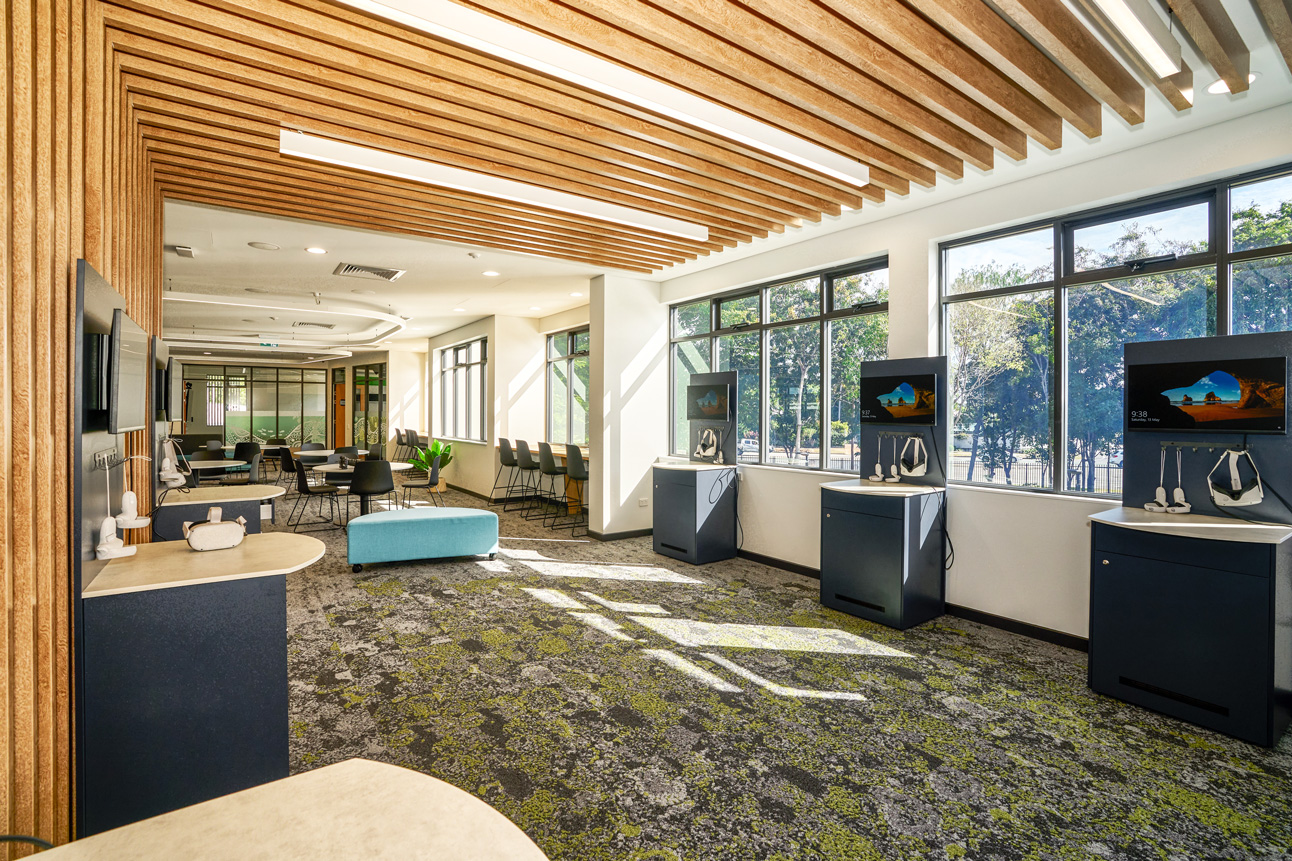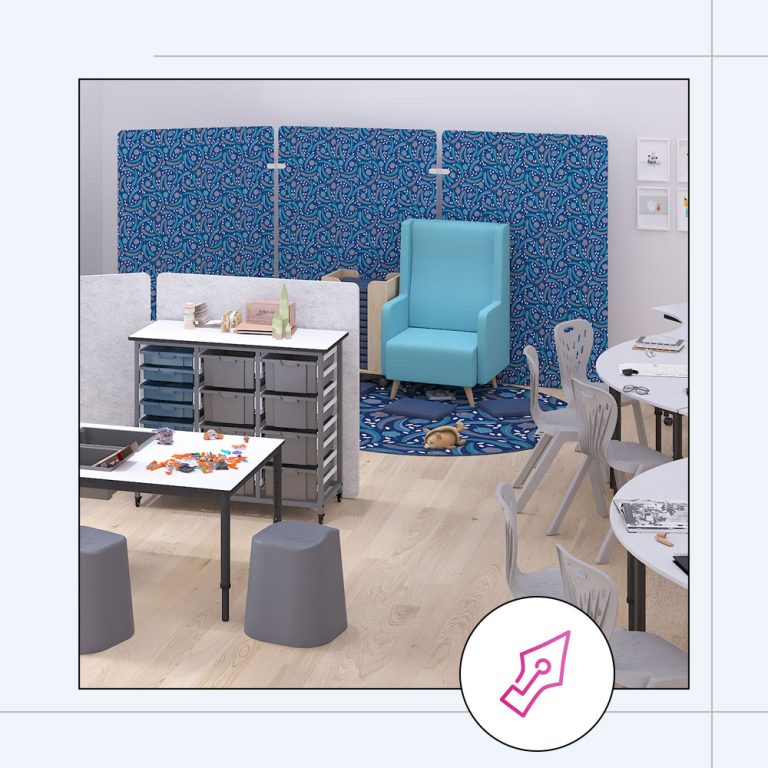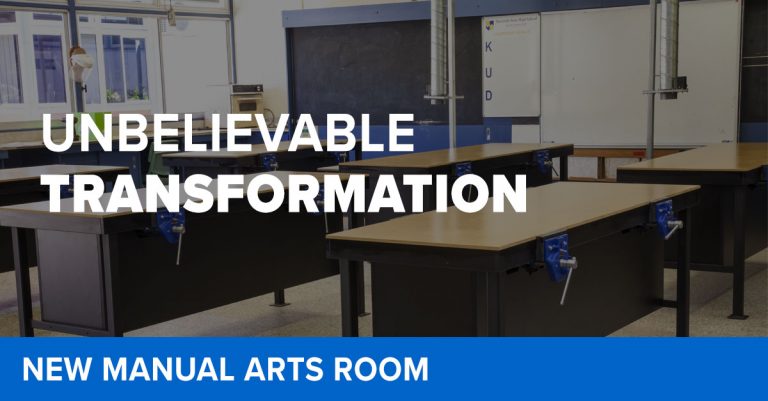Our brains absorb information in milliseconds to make judgments about quality, safety, and trustworthiness. Even after a tour, event, or principal’s speech, that very first impression can make the difference—encouraging families to enrol, prospective students to engage, and new staff to embrace your school’s culture.
Fortunately, a thoughtful combination of interior design elements and furniture can create a positive and lasting impression on everyone who walks through your doors. Whether you’re building new facilities or refurbishing current ones, the guide below offers a practical starting point.
Match Their Expectations to the Impression You Want to Give
Every visitor—whether a parent, teacher, or potential donor—arrives with a preconceived idea of your school formed by interacting with multiple touchpoints, including your website, social media, uniforms, reputation and word of mouth.
Your goal is to meet or exceed these expectations. Doing so prevents cognitive dissonance—the mental discomfort that arises when reality conflicts with belief—and increases the likelihood of a continued relationship.

Where to Focus First
Not every building needs a makeover. Instead, prioritise these high-impact zones:
Administration / Reception
This is the first physical interaction visitors have with your school. It should feel professional, warm, and clearly reflect your school’s identity.
Flagship Classrooms
These are typically the STEM, music, or flexible learning spaces you showcase on tours. These places are highly evocative, and parents naturally compare them to their own school memories, so ensure they compare favourably.
Library / Resource Centre
Often a communal hub for students and staff, as well as events, this space reflects your commitment to innovation and literacy, so make it stand out.
How to Achieve a Great First Impression
With your key spaces identified, focus on these design strategies:
Create the Right Ambience
Start with colour. This is an element that profoundly affects mood, so tread carefully. While your school’s colour palette may feature red, overusing this colour in your décor and on your walls can be overwhelming and agitating. Alternatively, an excessive use of grey, white and blue is professional, but may feel clinical. We recommend reading Our Definitive Guide to Using Colour in Learning Environments as it dives into colour psychology and its application.
Once you have a colour palette of both bright, intense hues and more subtle versions, you can incorporate patterned fabrics, like those from BFX’s Ninderry or Australiana ranges, for added visual interest.
We also encourage our clients to incorporate biophilic elements, such as natural timber furniture, ceramics, stone, and plants, to create a calming and welcoming effect.
Don’t forget texture, scent, and sound either:
- Both our hands and our eyes can sense texture, so incorporate textured décor and unusual shapes in cushions, carpets and artwork to make your space feel more three-dimensional. Eye-catching rugs, and curved furniture like the Jupiter Bookcase work well in libraries. Or add plush seating like the Tempo Double Lounge in a custom fabric to your reception area to encourage comfort and conversation.
- Smell can be problematic in high-use areas, so use subtle air fresheners and ensure carpets are well-maintained.
- Be mindful of noise carrying from one area to another, particularly in libraries and showcase classrooms, as this may indicate that concentration could be difficult. Soft music, particularly when showing a new auditorium, can enhance a visitor’s experience.
Emphasise Your Brand Thoughtfully
Branded upholstery panels or laser-cut logos on or behind reception counters reinforce your identity instantly and demonstrate pride and commitment to your school and what it stands for.
But remember, branding goes beyond logos. It’s a collection of visual, physical and emotional elements that creates the perception you want people to have of who you are, what you offer and what you stand for. Begin by thinking of your school’s values: are you known for compassion, academic excellence, or sustainability?
Then align your furniture choices with your message:
- For sustainability, use finishes, furniture or artwork made from recycled or repurposed materials.
- For nurturing environments, use warm woods, ceramics, and plush lounge seating like the Orana Reading Chair.
- For a future-focused image, use modern lines and cool tones with chrome finishes, such as the Cruize Wave Bench or Geneva Lounge Chair. (Take a look at Moorloolbark College for further inspiration on this theme.)
- Tip: Tell your school’s story with modular display furniture that features student work, historical milestones, or recent achievements.
Lastly, high-quality furniture conveys that your school cares for its students and staff—don’t underestimate the impact of replacing worn items (particularly upholstered furniture) before a tour.
Mind the Details
Lighting
Poor lighting can lower mood. Maximise natural light, especially on tour routes and place lounges near windows. Use adjustable LED task lighting in libraries or collaborative areas in classrooms to enhance focus.
Function & Organisation
Keep surfaces clear and sightlines open to reflect order and competence. Hide cables and store excess resources and projects with mobile storage and height-adjustable teacher stations.
Cleanliness & Hygiene
Choose easy-clean, antimicrobial worktops and vinyl-covered seating in high-use areas like science labs and food tech rooms. Add stylish sanitiser stations and pedal bins to demonstrate your commitment to hygiene.

Subtle Cues for Future Students & Staff
For Students
Spaces with flexible, comfortable furniture signal that student wellbeing and learning autonomy matter. Options like ottomans and height-adjustable desks on castors create an adaptive, student-centred environment. A great example is Ripley Central State School.
For Teachers
Ergonomic seating and well-designed breakout areas show that your school values staff wellbeing and models a healthy workplace culture—an important consideration for prospective hires.
Final Thoughts
The interior design choices you make today can powerfully shape how your school is perceived. By investing in thoughtful furniture, purposeful colour schemes, and brand-aligned design, you’ll create a first impression that speaks volumes, long before anyone says a word.
Explore our full range of learning space solutions, including modular school furniture, whiteboard tables, and recent case studies to get inspired. Or speak to our experienced team.











